How to Save Seeds for Next Year’s Garden
This post may contain affiliate links. Read our disclosure policy here.
Is your garden ending, but you want to preserve your wonderful plants for next year? This blog post will share simple tips on how to save seeds!
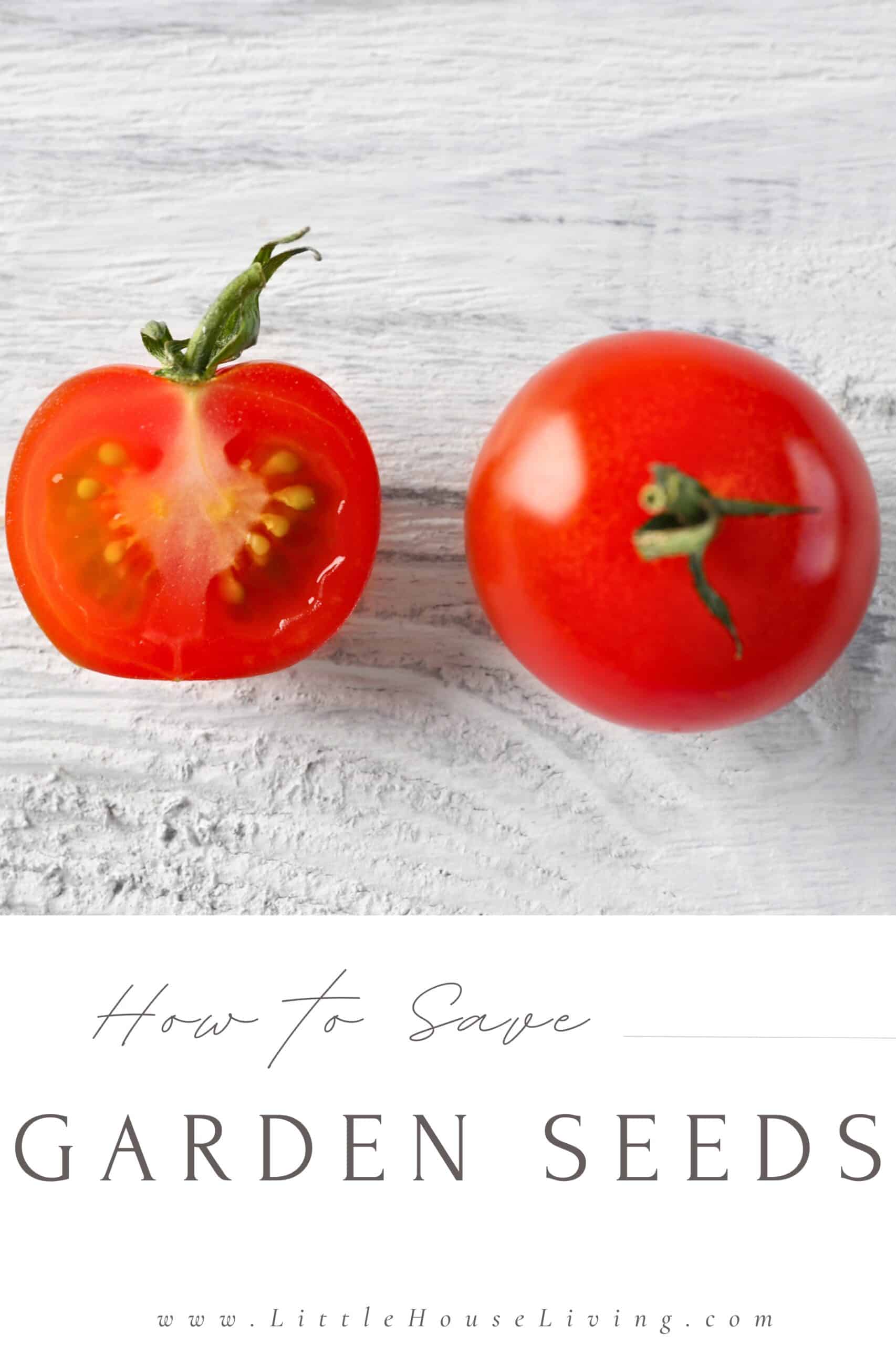
Saving Garden Seeds
If you planted heirloom seeds this year in your garden and think you are done harvesting now, you are wrong! Today, we are going to learn all about how to save some of the most common garden seeds. If you’ve been wanting to save money off your yearly gardening plans and learn to become even more self-sufficient, you will really enjoy today’s blog post.
Before learning how to save seeds, we have to know the difference between the types of plants and seeds you planted in the first place in your garden.
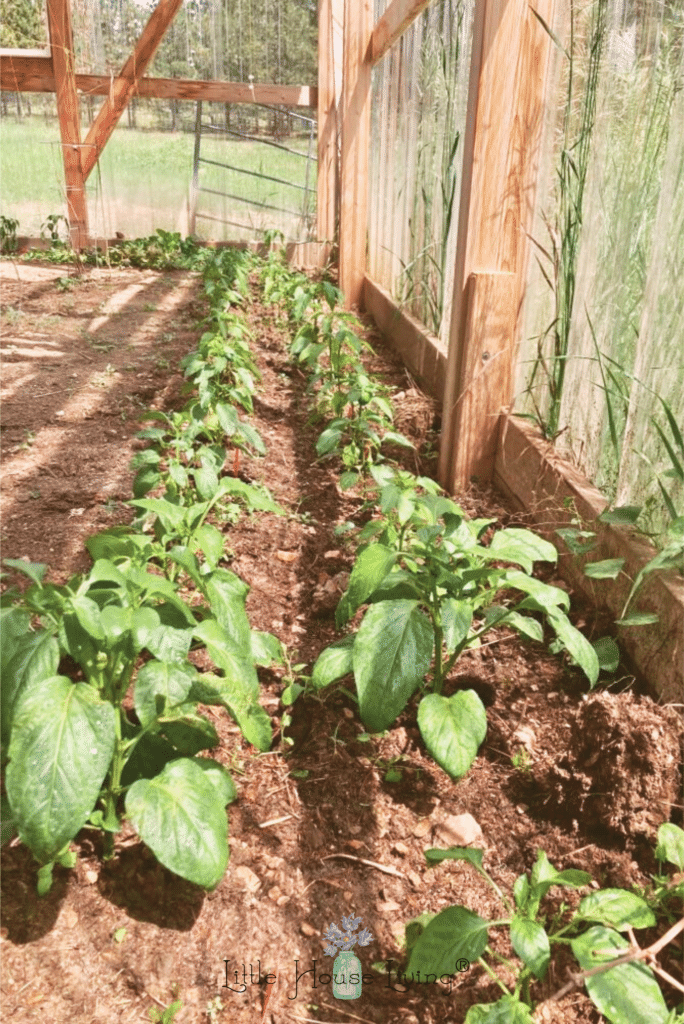
Tips for Saving Vegetable Seeds
You must be careful that you are getting seeds that will be true to their parent plant when planted again. Make sure you plant any plants that you are saving seeds from in a separate area from other plants of the same kind to prevent cross-pollination.
For example, if you planted lots of squash plants and want to save the seeds from one kind, plant it in a totally different area than the rest of the squash plants.
You can also self-pollinate any plant that you want to save seeds from. Take the pollen from a male plant and place it on the stamen of the female flowers. (Or just transfer pollen from one to another in things like tomatoes.) Then, mark the specific flower that you pollinated so you remember it later.
You don’t need to worry about this in self-pollinating plants like onions, carrots, lettuce, cabbage, peas, eggplant, cauliflower, broccoli, kale, spinach, kohlrabi, beets, brussels sprouts, chard, and peppers.
Your seeds will get better over time! Seeds saved the first year are already beginning to adapt to your microclimate. Seeds saved from those seeds the second year and beyond will be even better for your specific garden area.
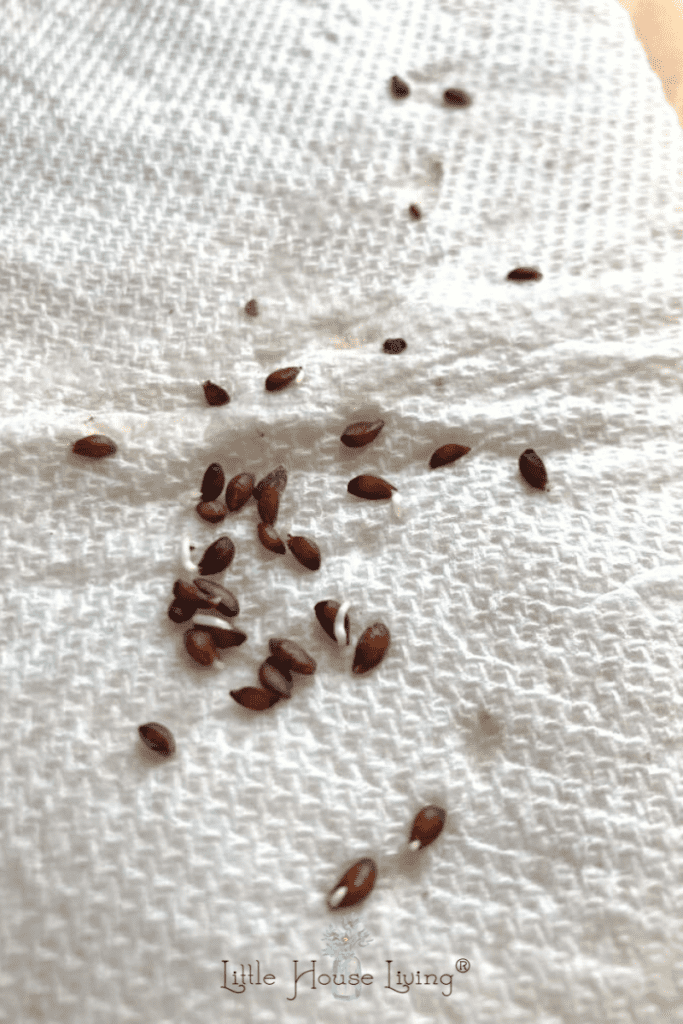
Types of Seeds to Save
Hybrid Seeds
Hybrid Seeds are bred to be different than their original plant. Maybe they grow bigger, produce more, or are more disease-resistant. Whatever the case, hybrid seeds are not able to be saved since they are different from the original plant and can produce unreliable offspring.
You can save and replant hybrid seeds if you really want to but they will produce hybrid plants and may have unreliable germination rates and traits.
Organic Seeds
Organic Seeds are produced without the use of chemicals and toxic fertilizers. They can be hybrid or heirloom, but they cannot be genetically modified. If you have heirloom organic seeds, you can save them.
Heirloom Seeds
Heirloom Seeds are seeds from plants that have been around for a long time. This means they are not modified in any way from the original plant. You can save these seeds because they will grow into the parent plants.
So, if you planted different varieties of Heirloom Seeds, you are in luck! You can harvest and save your plant seeds for next year’s planting, so you won’t have to buy new seeds. Below, you will find the most commonly planted veggies and learn how to save their seeds.
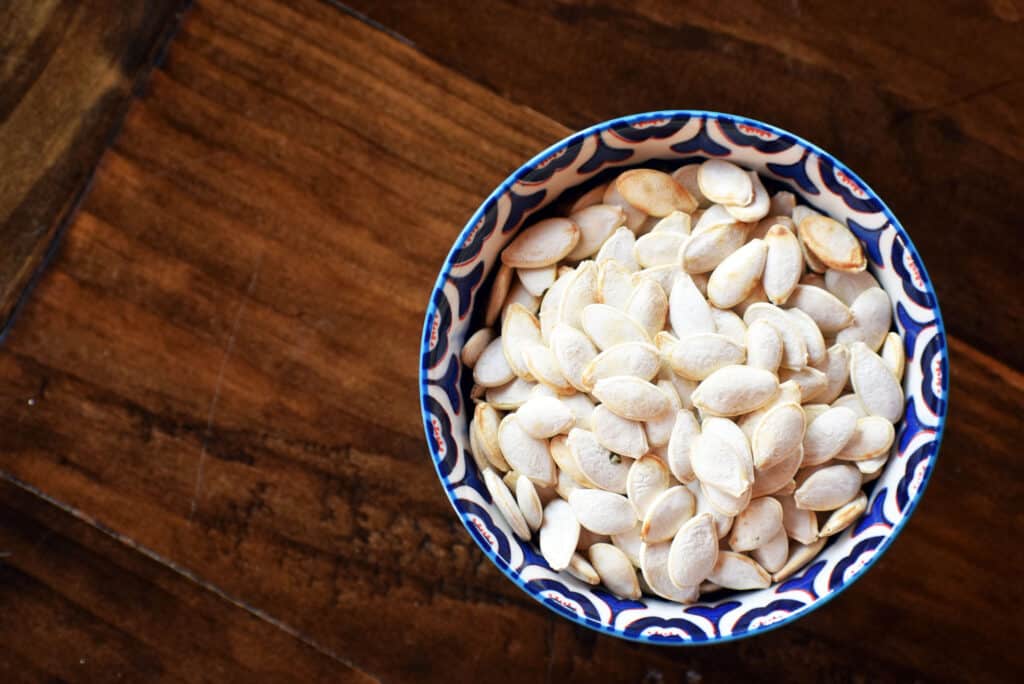
How to Save Seeds (Common Plants)
How to Save Bean Seeds
Allow several bean pods to ripen and dry on the plant. Do not let them get wet after they have started to dry (don’t water and make sure it doesn’t rain on them!). Once they are dry, the pods will begin to crack open.
You will want to try and harvest the pods before the seeds fall to the ground. If you pick the seed pods before the beans are dry, just lay them out in a dry, warm area of your home and let them dry before storing them for next year’s use.
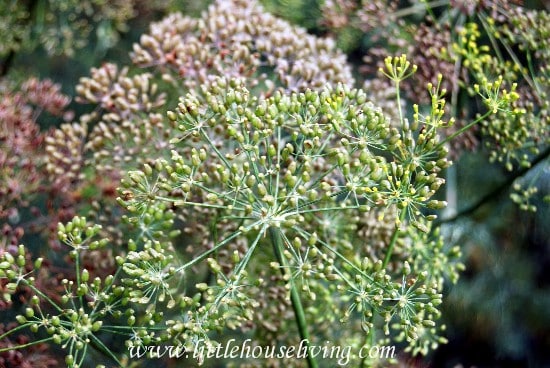
How to Harvest Dill Seeds
Harvest Dill heads at any time after they are ready to be picked. Store in a dry, warm area or hang upside down by the stem until the top part is dry. Harvest the seeds and store them for next year.
Dill will re-plant its-self if the dried seeds are allowed to fall to the ground. If you want it to grow in the same place you planted last year, you won’t need to do anything. Should you wish to move it and plant it elsewhere, be sure to harvest the seeds.
How to Save Cucumber Seeds
Cucumbers wanted for seeds should be left on the plants long after ripe. Yes, those big, huge cucumbers you miss under the plants will have a purpose! Remove the extra-large cucumber and cut open to remove the seeds.
You can dry the seeds on a dry cloth or a paper towel in a place where they will not be disturbed for three weeks before you put them away for next year. Before putting them away, make sure to clean the seeds.
How to Save Corn Seeds
Make sure any corn saved is non-GMO. Leave corn to dry out on the stalk. Just like with the beans, you will not allow the corn to get wet, and do not water the plants while drying.
Once the cobs appear dry, you can remove them from the plants and place them in a warm, dry area where they will not be disturbed for a few more weeks until they are thoroughly dried. Pull the seeds off the cob before storing them.
How to Save Pea Seeds
Peas can be saved using the same method as beans. Just let them dry on the plants, and do not let them get wet.
Once dried, pull them from the plants and harvest the seeds from inside the pods. The seeds should be fully dried before you store them.
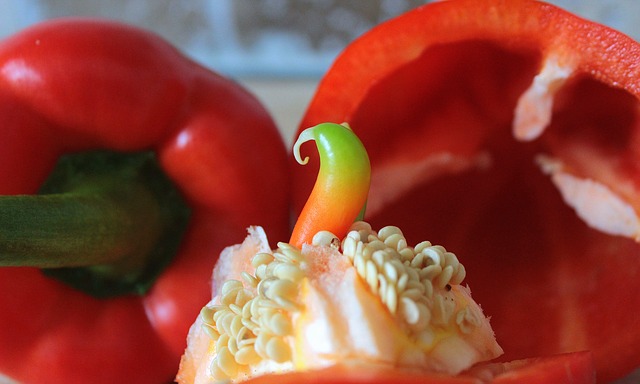
How to Save Pepper Seeds
Let your peppers dry on the plants before harvesting. Pick the peppers off the plants and harvest the seeds inside. (Always wear gloves when working with peppers, and do not touch your eyes; I’m speaking from a bad experience with this one!).
The seeds should be fully dried before you put them away, so you may need to let them dry for a bit longer on a plate where they will not be disturbed.
How to Save Squash, Melon, and Pumpkin Seeds
Similar to cucumbers, let the squash or pumpkins ripen for a long time on the stems (leave them for at least another 3 weeks past the regular “ripe” stage). Pick the veggies and leave them for another 3 weeks before opening the plants to remove the seeds.
Squash and pumpkin seeds must be fermented before they are harvested, and they will do this best still inside the vegetable. After this time, remove the seeds and wash them thoroughly (you want the oily feel gone). Dry the seeds from the water and let them sit to dry in a warm, dry area before putting them away.
Tip: Learn more about Uses for Squash Seeds!
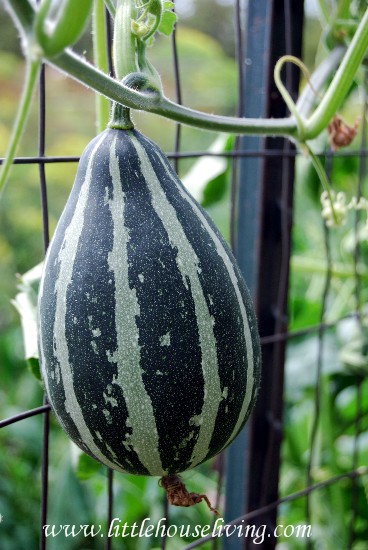
How to Save Gourd Seeds
Gourds are one of the most simple seeds to harvest! Let the gourds dry out (either on the plant or picked). Once you hear them rolling around inside like a baby rattle, you can break open the gourd and pull the seeds out to save.
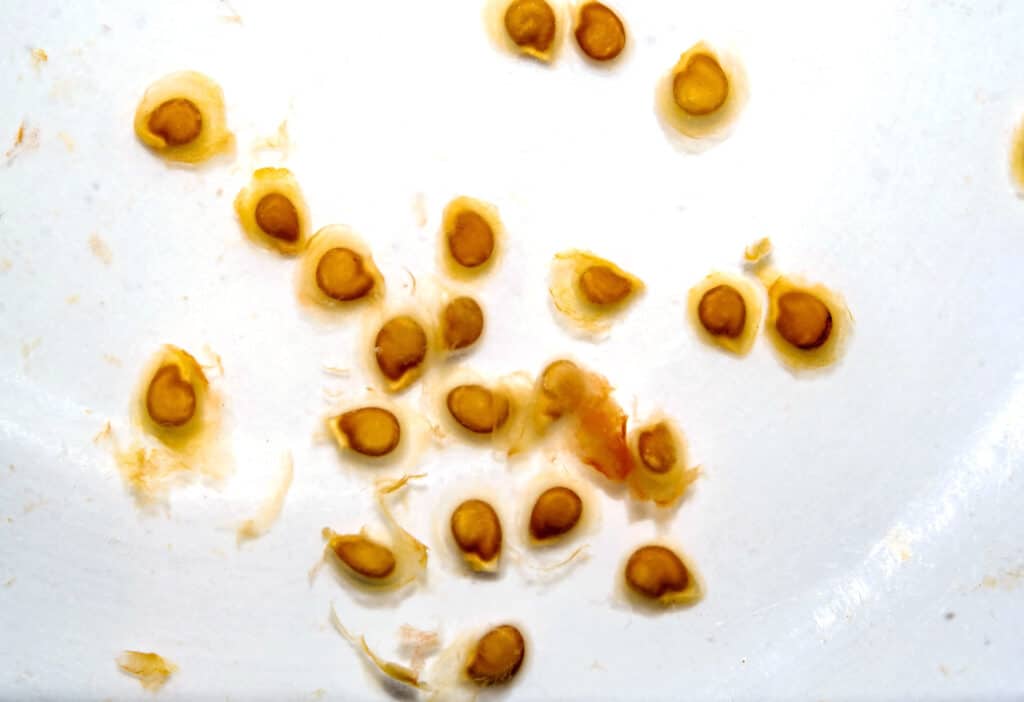
How to Save Tomato Seeds
You should ferment Tomato Seeds before storing them, just like squash seeds. To accomplish this with tomato seeds, pull the “guts” of the tomato out and place it in a bowl or mason jar for three days with a bit of water.
Once you see bubbling or mold forming, empty the jar, rinse the seeds well and place them on a paper towel or rag to dry.
Tip: Want to learn more about saving all types of seeds? I recommend the book Seed to Seed for detailed instructions and more seed-saving ideas.
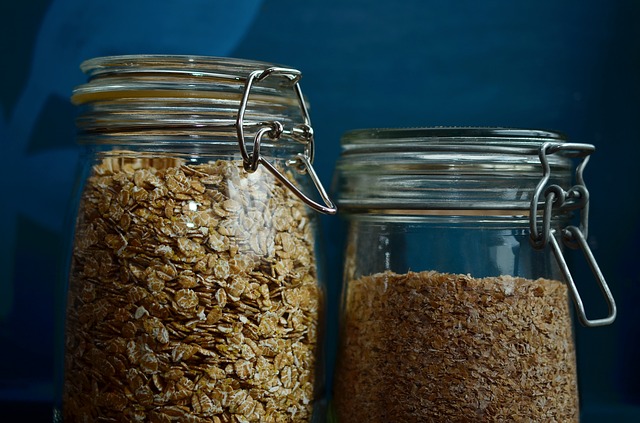
Containers for Storing Garden Seeds
You will want to make sure that you store your freshly harvested garden seeds in an airtight container. My favorite method is simply using a Mason jar with an airtight screw lid. They are inexpensive, and I always have them on hand.
If you have jars with glass lids and gaskets like those pictured above, they work really well, too.
If you have small amounts of seeds, place them in baggies, paper envelopes, or these Free Printable Seed packets and then place them inside your jar or container.
Seeds can have a shelf life of many years if stored properly before germination rates begin to be affected.
Common Questions About Saving Seeds
Seed saving is only illegal in seeds that have a current proprietary patent. If you are concerned about the legality of saving seeds, start with seeds that are “open source”.
First, use seeds that you have already been using and re-planting for several years to have the best success. Then, save the seeds as outlined above and store them in a mylar bag with an oxygen absorber for long term.
Flower seeds can be saved in a similar way to vegetables. Some flowers are very particular though and may not germinate the next year. Be sure and do a Google search for your specific flower type before saving the seed.
You can store them in plastic bags, however that bag will need to go inside of another air-tight, light-blocking container.
Need more gardening tips? Check out all our Gardening 101 articles!
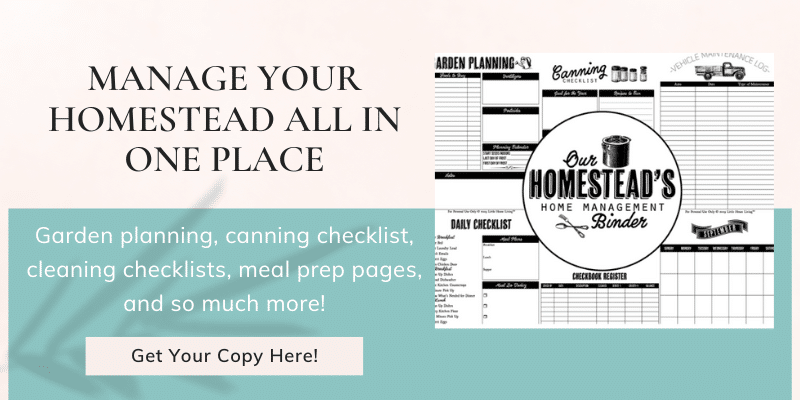
Have you ever tried to learn how to save seeds? Which ones have you saved, and did they work for you?

Merissa Alink
Merissa has been blogging about and living the simple and frugal life on Little House Living since 2009 and has internationally published 2 books on the topic. You can read about Merissa’s journey from penniless to freedom on the About Page. You can send her a message any time from the Contact Page.
This blog post on How to Save Seeds was originally published on Little House Living in August 2016. It has been updated as of October 2023.

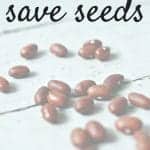

Interesting! I’ve never fermented my seeds when saving them ans they have worked fine.
Yes, that is exactly what I wanted to add. I never ferment my seeds….simply lay them out on a paper towel and they will dry to that towel. Then fold the towel and mark with type of seed, fold up and store. In the spring I can just simply tear around the seed and plant with that small piece of paper towel still attached. Works like a charm! 🙂
This was really helpful. Thanks
I’ve got the gathering of the seeds figured out but I’m confused on the prepping and storing. Can I put the seeds in my dehydrator on low or air only? (I live in the moist NW) Should I then vacuum seal them? Put them in the freezer? Or just toss them any a jar in a cool, dark place? Any tips? As always, thanks for all your info!
A dehydrator will work if it’s too damp or humid in your area. And I would just store them in a cool dry place.
I have been saving “heirlooms” before we called them that. Let me add a word or two of caution. Drying in a “warm” place simply means room temp. The hardest thing on seeds in heat. When you get above eighty degrees you start to kill the germination so never use a dehydrater unless you want dead seeds. Too, corn can be saved on the cob instead of shelling. In fact, I recommend it. Also, just because your seed is open polinated doesn’t mean you can save it. Say you grew two diffn’t varieties of OP squash in your garden , then your squash crossed and you won’t get true to the parents next year so saving seed means only planting one variety or going to the trouble to see things don’t crosspollinate. When fermenting tomatoes, I wait to get a nice thick moldy scum. You’ll get a few seeds float to the top but they’re sterile anyway, Scrape off the scum then stir in cool clear water. Wash them off in a tea strainer and spread out to dry. I have small screens I’ve made that fit a drying rack to dry all my seeds on. You can save carrots and beets too. Just dig in fall and store in a root cellar. Come spring, set them out as early as possible at the same depth they were originally planted. They’ll go to seed the second year. Be sure to save and plant several beets and several carrots so they’ll polinate. Also, kill any queen anne’s lace you see anywhere as it will pollinate with your carrots and mess up your seed crop.
I am a keen gardener, but have always been slightly confused by exactly what “heirloom” varieties were. So thanks for fleshing that one out. Wish I could get my Pumpkins to climb like that Gourd.
I also didn’t know what set “heirloom” apart or that you could ferment seeds before storing them. I’ll keep that in mind after some things grow this summer. Thanks for sharing this!
When fermenting the tomato seeds, does the jar need to be covered with a lid, cheese cloth or left open?
Thanks!
I usually use cheesecloth.
The concrete planters are a perfect way to make a beautiful display with little cost. I love this idea!
This year will be our first attempt at seed saving. Thank you for the advice.
I can’t afford to buy jars and I don’t have any to save so I use my empty prescription bottles. I dry out the seeds when I buy vegies at the store between newspapers. Put them in the RX bottles then freeze them. About a week before planting I defrost them, make sure they are dry then plant, no problems. In fact I had a refrigerator repair man a few weeks ago and he mentioned to me that I take a lot of meds. due to all the bottles in my freezer. I laughed and told him the bottles were full of seeds not pills. Love your tips and will use quite a few thanks muchies! Susie
I have been unsuccessful in re-growing plants from their own seeds.
Thanks for the tips!
I’ll have to give it another try!
Michelle
This is so interesting. I don’t do well with vegetables but I will give it another try.
Thanks for this post. We tried planting some squash seeds this past year. A squash plant grew and produced only one fruit, we picked it and then the plant died. I think it’s time to follow some of your advice! PS found you on the Totally Terrific Link Party.
What great tips! I’ve never fermented seeds before storing, and I’m curious as to what kinds of differences I’ll see compared to fermenting first. 🙂
Such a wonderful guide to saving seeds. You are featured this week at Dishing It & Digging It! Thank you for sharing with us!
Thanks for sharing this. It is too late to do this, this year, but will give it a try next year.
Thank you for sharing this wonderful informative post on Wonderful Wednesday link party. I’ve been going to try this for many years, but have never actually done it. I think that this is the year! Shared and pinned.
Great information, thanks! I am saving my Cherokee Purple tomato seeds, they are fermenting on the counter right now.
I do tend to save a lot of seeds… some veggies, lost of flowers and herbs…. I do tend to not save the “messier” ones, like tomatoes…. maybe someday. 🙂
Just wanted you to know that I featured this on the create link inspire party. Thanks for linking up.
Thanks for the feature!
besides drying, do you have to leave the seeds for a period or somehow force the seeds to start germinating (fridge/paper towel method)
While letting tomatoe seeds soak in water can I cover it with the lid or a paper towel ?
Hi Merissa:
I’ve been saving seeds from my flower and veggie gardens for a few years now. Last year I tried growing tomatoes from store bought tomato seeds for the first time and it was great. I plant Roma and Beefsteak tomatoes in separate areas and got quite the harvest especially the Romas. The quantity and quality was far better than the packets of seeds that I’d been growing tomatoes from for the past several years. I’ve saved beans and peas for several years running and still get a good germination and harvest. I’ve only had modest success with spaghetti squash and zucchini. Since I live in a dry mountain climate, I simply dry out the seeds on cookie sheets in my kitchen and when ready I put them in old envelopes that I’ve saved. I seal the envelopes, write the name of the seeds on the outside and date it. Sometimes I end up with seeds from 2-3 years and will test germinate them in the spring before planting outside or starting indoors for outside transplanting. All my envelopes get stored in carboard shoe boxes and go into the basement where it is cool and dry. I have found any seeds I tried to store in plastic baggies tend to go moldy despite our low humidity so I started the envelope system and it has always worked well.
Thank you so much
I always buy seed every year
But as from today I never
God bless 🙌 🙏